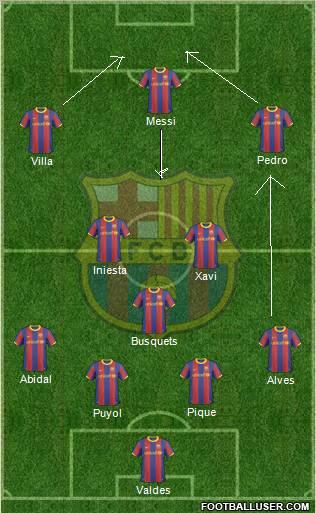The game of football has evolved very rapidly since 2000 and has became more dynamic, with players adapting to become more versatile. To understand how football has changed over time, one doesn’t need to look beyond the role of players at width ends of the pitch. Pacing up and down the length of it on the wings, today’s fullbacks are chosen based on their skills in the attacking third and today, it is perhaps the only position that ideally requires the player to be as good in defense as in attack.
The origins
Pre-1958 WC, the W-M formation was in vogue. The three defenders at the back were also called full backs. But, the birth of the modern full back happened when Brazil upgraded to the 4-2-4 formation under Vicente Feola. Brazil had a potent attacking force upfront with Garrincha playing far ahead, closer to the opposition’s goal and with only two midfielders. However, there was massive space ahead of the full backs to exploit. This is precisely when the term attacking full backs came into existence.
The full backs, Djalma Santos and Nilton Santos would maraud up and down the pitch covering the space and in turn providing the necessary width in the midfield while also helping out in defense. The 4-2-4 was a smash hit with Brazil sweeping opponents and most of the clubs turning to a 4-2-4 from the usual W-M. But, Brazil were cautious enough and instead of going all out, Mario Zagallo used to drop back to the wings, making it a 4-3-3.
It is amazing that since then, Brazil always had potential game changers as full backs. Recently,the 1998 and 2002 WC witnessed Roberto Carlos and Cafu bombarding ahead and overlapping their wingers and providing the extra options in attack. It hasn’t changed since then. Zambrotta did the same for Italy in the 2006 WC. Currently, Brazil have Maicon, Dani Alves and Marcelo who offer so much in attack that sometimes you confuse them for wingers. But, Cafu and Carlos were actually wing backs in a three-man defense while there is no place for a three man central defense in the modern game.
Revolution of the full back
Cafu and Carlos spread terror from the wings and Brazil, in WC 2002, actually posed a great threat from the wings without actually having any wingers. But before that, considering that the Premier League was the most marketable and recognizable brand, most of the clubs in England were playing a classic 4-4-2. Alex Ferguson’s champion side of 1999 is perfect example of this and still there was no real advent of an overlapping full back until Arsene Wenger introduced Ashley Cole as his left-back. Ashley Cole had superb vision and crossing ability along with great speed, and with Pires ahead of him, playing further ahead than a traditional winger in a 4-4-2 and cutting into the centre, he had lots of space to work. And we all know what happened at Arsenal. They became the Invincibles.
When Jose Mourinho took charge at Chelsea, he introduced the 4-3-3, a radical change from the usual English 4-4-2. In reality it was more like a 4-3-2-1 with Robben and Duff playing as advanced wingers than wide forwards. At Porto, Mourinho had won the UEFA Champions League playing a 4-3-1-2 which was similar to Chelsea but it had no width. He had to rely on his full backs, Valente and Ferreira to offer him much needed width. At Chelsea, the middle three – Makelele, Lampard and Tiago – were very narrow and again, practically offered no width and effectively squeezed out any space for the opposition in the middle. With the opposition lacking men in the centre, the wingers tended to drift inside a little, leaving spaces on the wings for the full backs to exploit. Mourinho went on to win the Premier League in great style.


Another team which dominated Europe in the 2000s was AC Milan. It’s interesting to note that Milan also had no proper wingers in their team. With Gattuso providing the muscle in defensive midfield and Andrea Pirlo as the deep lying playmaker, they also offered no width with a 4-3-2-1 (Christmas tree) formation. They relied heavily on their full backs to utilize spaces and Milan made it to three champion league finals and winning two of them.
It is safe to say that the downfall of 4-4-2 and the rise of variants of 4-3-3 paved way for the rise of attacking full backs. Currently, 4-2-3-1 has become the default system for innumerable teams with Real Madrid being one of them and you can clearly notice the importance of full backs in their set up. It is for a reason they decided to splash 30 million euros for one of the finest left backs in the world.
Effectiveness of a fullback in the modern game
Let’s consider the role of Dani Alves in Barcelona’s 4-3-3. With Sergio Busquets as the pivot and Xavi drifting to the centre as creator and Pedro trying to cut-in, to exploit the space left by Messi, who drops as a ‘false nine’, the entire right side of the pitch is left unattended. This is where Dani Alves comes into the picture. With Barcelona holding onto the ball and Xavi looking for an opening, Alves provides just that. The opposition full back goes behind Pedro, who is actually moving towards the centre, creating a huge vacuum for Alves and giving him sufficient time on the ball to take a shot or look for his team mate in space. Now what happens if Barcelona lose the ball?
When Dani Alves is busy moving forward, the winger who was supposed to mark him has a hard time deciding what to do. He cannot leave him unmarked. So, he has to follow Alves. It is common knowledge that many of the wingers today cannot properly defend or tackle and when they do that there are more chances of getting themselves carded. Hence, they try to stick to him without really defending and hoping to close down the space for Alves. So, when Barcelona loses the ball, the opposition has no winger on the left as he is too deep, stuck with Alves and hence they cannot initiate the attack from that flank. It’s a win-win for Barcelona.
It is not always the same against every opponent, though. While playing Real Madrid, Pep Guardiola had Alves restricted to his own half considering the threat of Cristiano Ronaldo. This means that a full back is bound to be pinned back in his own half only when the opposition winger is pacy and tricky and is technically superior. When you watch the header scored by Ronaldo in the Copa Del Rey Final, you see that Alves does the right thing by trying to close down Di Maria, but Marcelo makes his run inside and for a moment Alves lets Di Maria slip behind him giving him ample space and time to weigh his cross for Ronaldo. This actually happened because Barcelona had no proper winger to counter the attacking threat of Marcelo. They had to make sure that they always held the ball and relied on Alves pinning Marcelo in his own half and when they lost the ball to Marcelo who had space, he threaded the pass to Di Maria.
This brings us to Marcelo. Now, the roles of Dani Alves and Marcelo are not very dissimilar. Jose Mourinho has played Ronaldo as an inverted winger and this had worked immensely in Marcelo’s favor. Marcelo is a left-footed player and Ronaldo is right-footed. Let us assume for a moment that Di Maria is playing on the left with Marcelo. When this happens we have two left-footed players who are assigned the role of playing wide. With normal wingers, the tendency to cut inside is less and hence this means less operating space for Marcelo who has Di Maria occupying the space ahead him. This will make Marcelo come inside of Di Maria which will again render Marcelo ineffective as he is left-footed and can only play the ball back to him.
Now, when Marcelo is played alongside an inverted winger like Ronaldo, who has the tendency to cut inside, Marcelo is left with so much space to overlap Ronaldo, as he holds his full-back marker. When Marcelo overlaps Ronaldo, again the fullback has to move towards Marcelo leaving Ronaldo with space to receive the ball back and make a run at the rest of the defence. When this happens, the centre-back cannot move forward to deny Ronaldo the space, because he would leave too much space behind him which can be exploited by the centre forward or the trequarista to move into and score a goal.
The combination of Philip Lahm and Arjen Robben do more or less the same with Bayern Munich with Lahm being right footed and Robben being left footed.
Future formations and the role of full backs
The two-man defensive midfield is very important in the context of the modern game. Most of the teams have confined themselves to single striker formations which mean that two people in central defense are more than necessary to tackle the threat posed by the centre forward. Sometimes, the full backs could lose possession of the ball in the opposition half and are attacked rapidly from the wings. When his happens, it could leave the central defense helpless. In such a situation, the deep lying play maker can drop further deep, marking the centre forward with the other defensive midfielder in pursuit of the regista or the primary play maker. This will enable the central defenders to shift themselves a bit towards the wings and stop any potential threats by tackling or closing down the wingers and preventing them to cross the ball, and in turn allowing full backs the time to rush back to their stations.
It has also become common that a number of full backs are being employed as wingers by their managers as they can perform the winger’s job very effectively thanks to the demands of the modern formations. Marcelo was used as a winger by Pellegrini while Gareth Bale has taken his place as one of the most dangerous wingers after Redknapp pushed him ahead.
The modern game has effectively seen the demise of the traditional winger who was very important in a 4-4-2. Teams today are looking for winger-forwards who can cut in from the wings and exploit the spaces behind the full backs. Football has always evolved and 4-2-1-3 could be the next stage of evolution with Real Madrid often playing the same, thanks to Ronaldo and Di Maria. When this happens, there is so much space ahead of the full backs to exploit because the wingers will be pushed further ahead.
We could as well see a 2-4-1-3 evolving with the full backs taking the role of wing backs permanently thanks to the two-man central defensive midfield, with either one dropping back or advancing effortlessly making it a five man defense or a four man midfield in offense. But, this formation might not work effectively as teams will counter it by their winger forwards, who will target the space behind the wing back.
Coaches will come out with new strategies and look for players who can satisfy their systems. Looking at how the teams have been shaping up, the full backs might just hold the key for future formations.





